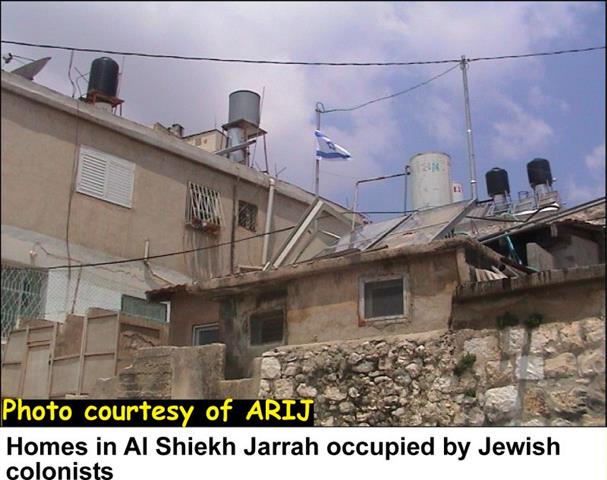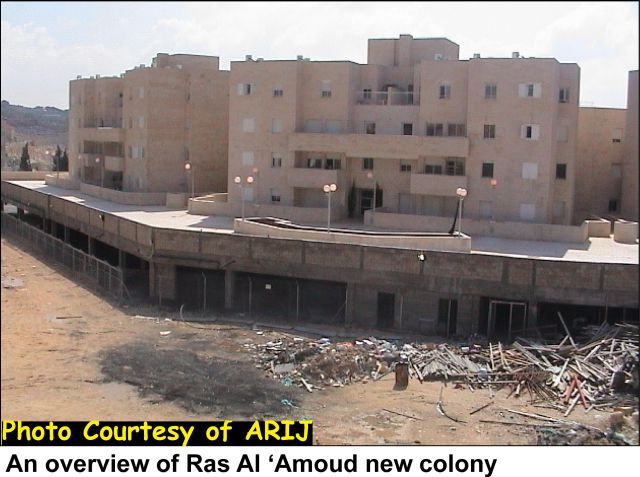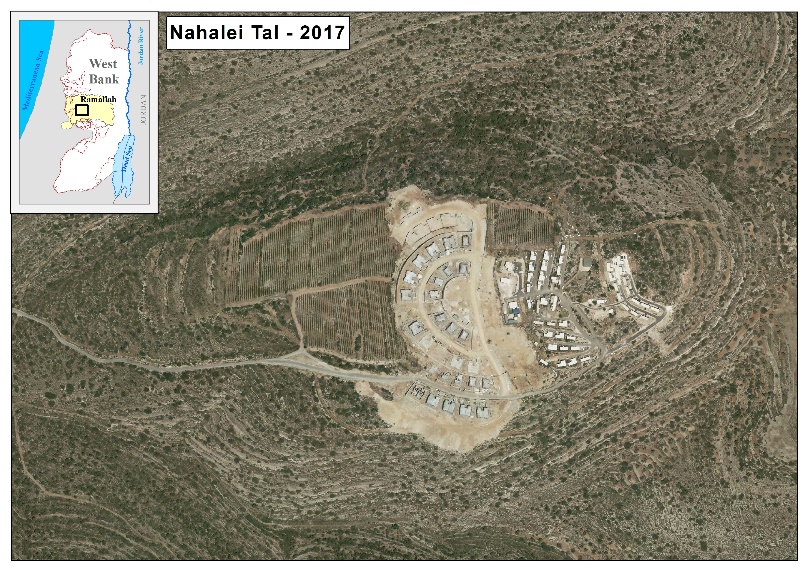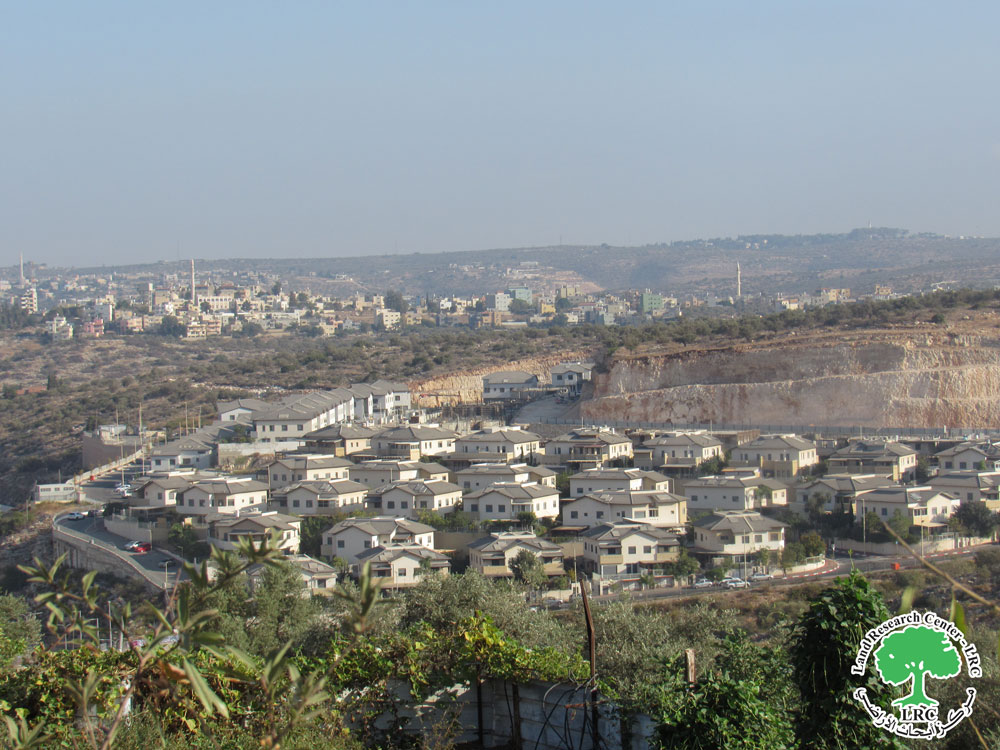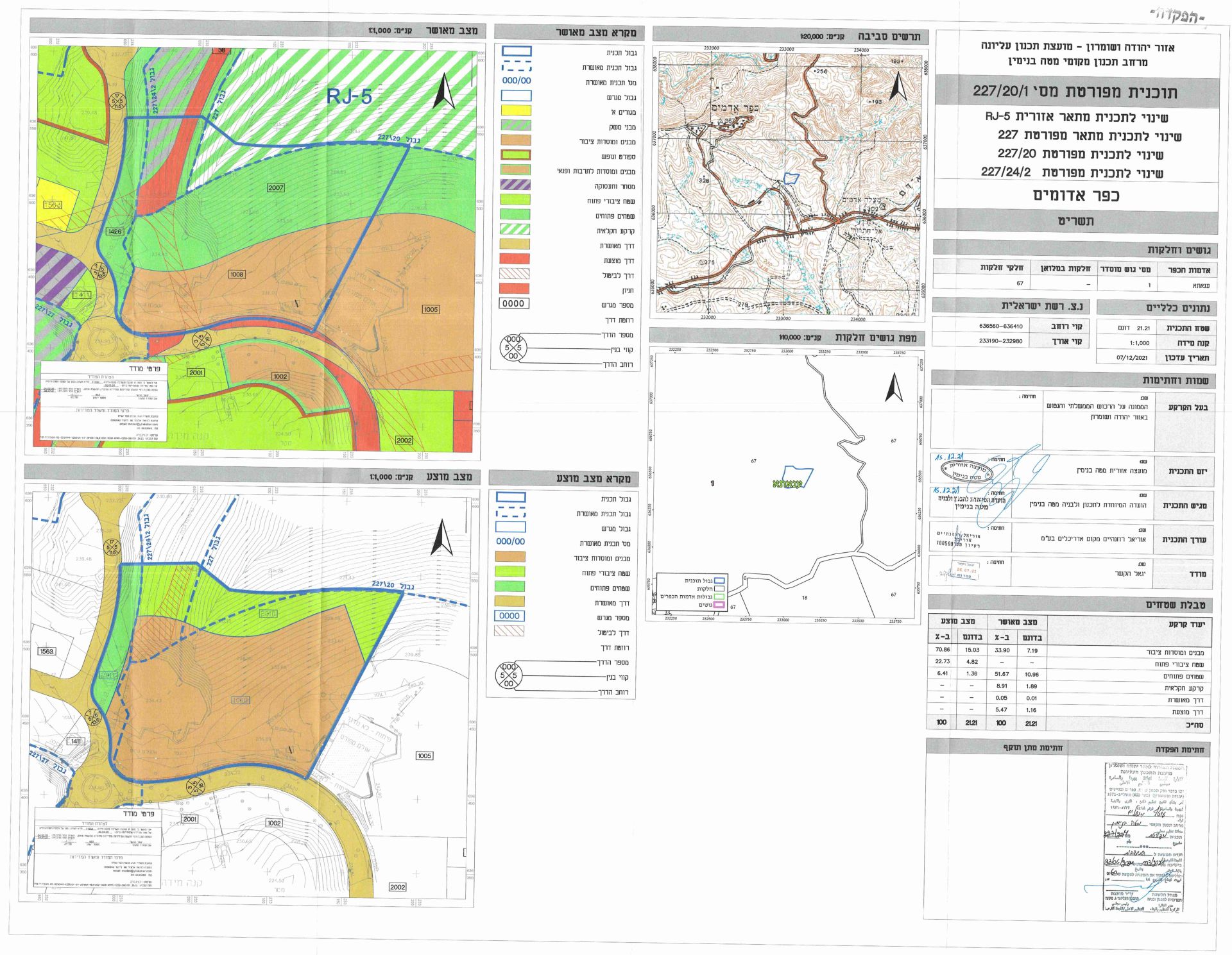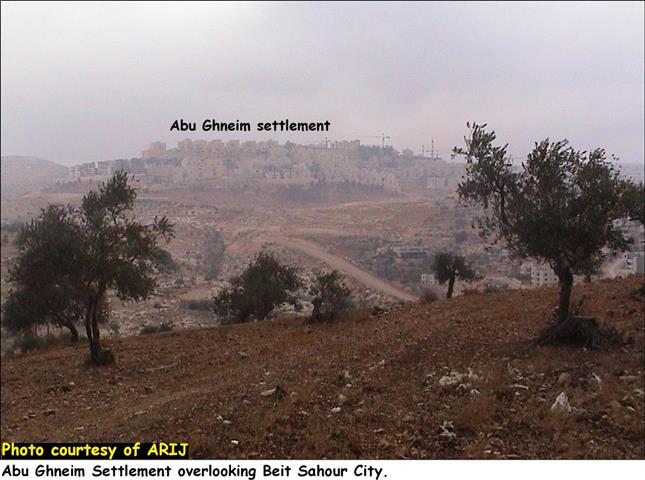After capturing East Jerusalem in the 1967 war, Israel unilaterally expanded the Jerusalem Municipal Boundaries to include Palestinian East Jerusalem and areas of the West Bank. The Jerusalem municipal area was expanded from 6.5 Km² to 70.5 Km2 (growing to 10.8 times its original size). The expansion entailed the annexation of open spaces inside the West Bank. These open spaces were integrated into Israeli planning schemes and became sites for the construction of the illegal Israeli settlements that soon sprung up throughout the recently occupied territory. Utilizing this open space, Israel began to construct settlements in strategic locations around Palestinian cities and villages.
In East Jerusalem these settlements served a dual purpose. First, the new settlements formed buffers between Palestinian neighborhoods, cutting them off from each other and creating small and fractured Palestinian enclaves. Second, the influx of Jewish settlers into the new settlements in East Jerusalem contributed to a Jewish Israeli demographic majority within the newly expanded Jerusalem municipal boundaries. Migration to East Jerusalem settlements contributed to the Israelization, and more precisely, the Judaization, of the city. As a result, the demographic composition of the city rapidly changed, leaving 28% Palestinian and 73% Jewish. The construction of Israeli settlements in East Jerusalem has continued since 1967 with existing settlements almost continually expanded and new settlements created. Thus, the demographic ratio has changed only slightly in the past 37 years. Currently Jerusalem is 33% Palestinian and 67% Jewish.
Every Israeli government since 1967 has expanded Israel's illegal settlements in the Occupied Palestinian Territories. The government encourages Jewish Israelis to move to the settlements by offering attractive incentives. Particularly in East Jerusalem it is a matter of Israeli policy to maintain and expand the settler population in order to sustain the strategic Jewish Israeli demographic majority. In line with this Judaization strategy, Israel is intensifying its colonization activities inside Palestinian neighborhoods in East Jerusalem, especially in the Old City, Al Sheikh Jarah (Shimon Hatzadik and Karm Al Mufti), Al Musrara, Ras Al Amoud and in Wadi AL Joz. See Photo 1 & Photo 2, Al Musrara, and in Wadi AL Joz. See
In Al Sheikh Jarah and Al Musrara attempts were made to empty a part of the neighborhood of its Palestinian residents and replace them with Jewish Israeli settlers. Extremist Israeli settler groups have aggressively appropriated Palestinian properties in these areas. There are reports that Israeli groups have even formed fake organizations through which property transactions have been managed to ensure purchase by Israeli Jewish settlers. Furthermore, settlers who move into these areas are often militant and are known to attack Palestinian civilians. and Al Musrara attempts were made to empty a part of the neighborhood of its Palestinian residents and replace them with Jewish Israeli settlers. Extremist Israeli settler groups have aggressively appropriated Palestinian properties in these areas. There are reports that Israeli groups have even formed fake organizations through which property transactions have been managed to ensure purchase by Israeli Jewish settlers. Furthermore, settlers who move into these areas are often militant and are known to attack Palestinian civilians.
Plans for an Israeli residential neighborhood in Wadi Al Joz
Wadi Al Joz, is a Palestinian neighborhood located to the east of the Old City of Jerusalem. It has a total population of 6740 inhabitants, a built up area of 347 dunums, a density of 19.4 person per dunum and 931 dwellings (PASSIA). Part of Wadi Al Joz contains an industrial workshop for which the neighborhood is famous. See Map 1
Recently, Jerusalem mayor Uri Lupolianski announced his intention to rezone part of Wadi Al Joz and convert it to an Jewish residential area. The area was previously zoned as a Palestinian residential area where housing for teachers was to be constructed. The Jerusalem municipal authorities scrapped this plan, however, in favor of building a new Jewish Israeli settlement. The prospective location for the new settlement is below Hebrew University on a ridge overlooking the road to the large settlement of Ma'ale Adumim on one side and Emek Tzurim national park on the other. For further details, click here.
Jerusalem's claimed that rezoning the neighborhood to a Jewish residential area would 'add significantly to the unification of the city', because it intends to link the Israeli settlements on Mount Scopus, (Hebrew University and Hadassah hospital) with the eastern part of the Old City. The municipality also claims that it would ensure the security of Israelis traveling to the settlement of Ma'aleh Adumim and the national park.
Closing the settlement loop around Jerusalem
Israel has fortified the unilaterally expanded Jerusalem municipal boundary by enlarging existing settlements and building new ones. In this context, Israel's Ministry of Construction recently released a plan (the ''E1'' Plan) to construct a new settlement containing 1500 housing units, three hotels and an industrial zone on a hilltop close to Al 'Esawiya and Hebrew University. As a result 12443 dunums of lands from the Palestinian neighborhoods of At Tur, 'Anata, Al 'Ezariya and Abu Dis will be seized. ) to construct a new settlement containing 1500 housing units, three hotels and an industrial zone on a hilltop close to Al 'Esawiya and Hebrew University. As a result 12443 dunums of lands from the Palestinian neighborhoods of At Tur, 'Anata, Al 'Ezariya and Abu Dis will be seized. The ''E1'' plan calls for the construction of additional Israeli Jewish settlements near the municipal boundary of Jerusalem in order to encircle the eastern parts of the city. Accordingly, these settlements will increase the Israeli Jewish demographic majority in the city and eliminate any possible expansion of Palestinian neighborhoods in the area.
Conclusion:
United Nations Security Council Resolution 298 (1971) states that 'all legislative and administrative actions taken by Israel to change the status of the City of Jerusalem, including expropriation of land and properties, transfer of populations and legislation aimed at the incorporation of the occupied section, are totally invalid and cannot change that status.
[and] urgently calls upon Israel to rescind all previous measures and actions and to take no further steps in the occupied section of Jerusalem which may purport to change the status of the City or which would prejudice the rights of the inhabitants and the interests of the international community, or a just and lasting peace' (Resolution 298).
The construction and expansion of settlements in and around Jerusalem violates International Humanitarian and Human Rights Law, particularly the Fourth Geneva Convention of 1949. Additionally, the Israeli colonization strategy destroys the chances for a just peace by manipulating demographic realities and other 'facts on the ground' in order to influence the outcome of future peace negotiations with the Palestinians.
References:
1. (2004, September 25).Jerusalem mayor wants to build a Jewish neighborhood replacing a previously planned Arab one in Wadi Al Joz. Al Quds newspaper, pp. 1, 31.
2. PASSIA, (n.d.). Jerusalem. retrieved Oct 20, 2004, from Jerusalem Facts & Figures Web site: http://www.passia.org/palestine_facts/pdf/pdf2004/Jerusalem/14-Jerusalem.doc.
3. Resolution 298 (1971). (n.d.). retrieved Oct 20, 2004, from United Nations Information System on the Question of Palestine Web site: http://domino.un.org/UNISPAL.NSF/0/441329a958089eaa852560c4004ee74d?OpenDocument.
Related articles
1. The Obstacles to Peace Just Got Bigger !!! August 2004.
2. Ras Al Amoud Neighborhood: A hot spot in East Jerusalem, June 2003.
3. Homeless in front of their homes, May 8,2003.
Prepared by:
The Applied Research Institute – Jerusalem


